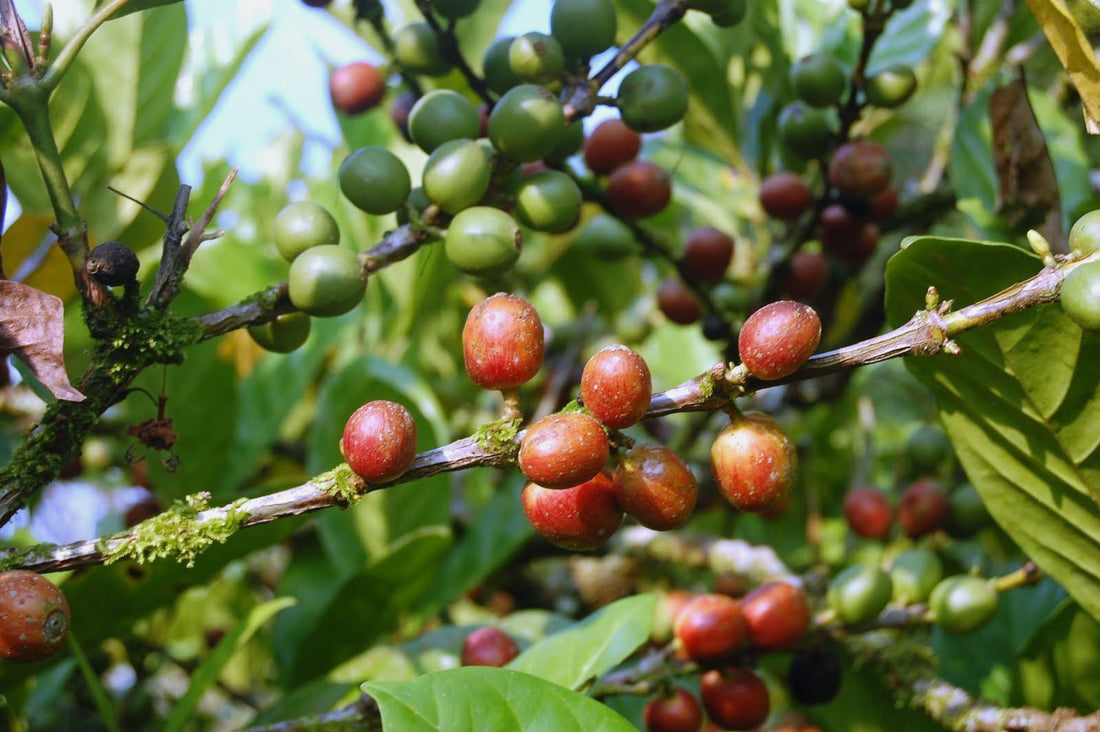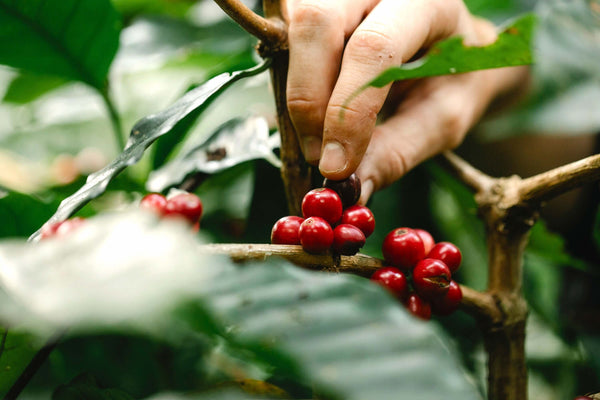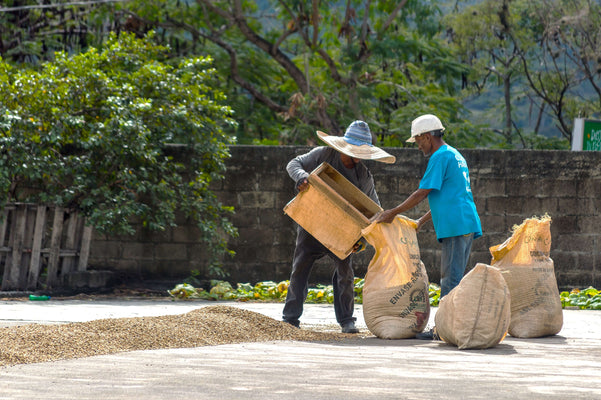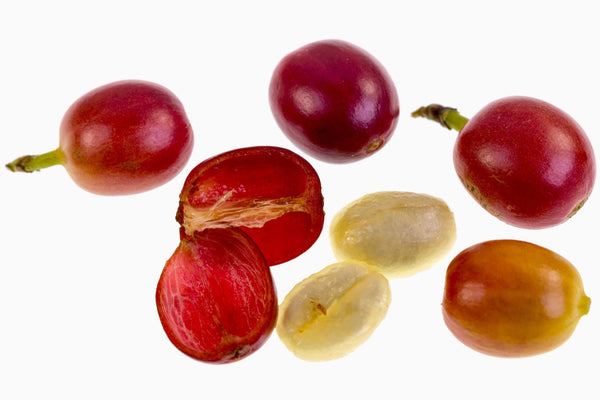Coffea is a flowering shrub or small tree (abbreviated as coffee plant) that originated on the African and Asian continents. Coffea produces edible fruit. Each fruit contains two green seeds, which turn brown after roasting and are known as coffee beans.
There are 124 coffea species in the world, but only 2 of them, namely Coffea arabica and Coffea robusta, are primarily grown, traded, and consumed by us. Some refer to Coffea liberica as the third coffee species, but it is not a general consensus of the mainstream. In this article, let us learn more about Coffea liberica.
Origin
Coffea liberica is an indigenous coffea species from Liberia, western Africa.
During the late 19th century, the widespread cultivation of Coffea liberica began across Africa, South America, the Caribbean Islands, the Indian Ocean Islands, Asia, and Oceania.
Over the centuries, the cultivation of Coffea liberica species has not been a universal success. At the time, the lack of understanding of the species and heavy comparison to Coffea arabica were reasons why. Often, Coffea liberica was referred to as the species with an inferior flavour profile and poor quality. Thankfully, with new knowledge breakthroughs, the perception of Coffea liberica has slowly changed to positive tones over the years.
Today, other than growing in the western and central parts of Africa, Coffea liberica is also found naturalised in the Philippines, Indonesia, the Seychelles, the Andaman and Nicobar Islands, and Malaysia.
Coffea liberica, or simply known as Liberica, despite being called as the third coffee species, only accounts for less than 2% of world coffee production and consumption, making it a lesser known and a rare commercial coffee species.
Coffea liberica
The Liberica plant thrives in tropical lowland climate conditions, where it grows at elevations from sea level to 600 metres, with high humidity and warmer temperatures between 24 and 30 degrees Celsius.
Liberica has lusty growth genetics where its plant can grow large between 5 and 20 metres tall, has thick leaves, and yields big fruits. In comparison, Liberica has bigger trees, leaves, and fruits than its arabica and robusta counterparts. Because it can grow big and tall, it requires seasonal pruning and proper spacing between plants. Depending on the height of the plant, harvesting liberica’s fruit may require the use of a ladder.
 Liberica fruit is larger and, when pulped open, reveals two green seeds, sometimes more.
Liberica fruit is larger and, when pulped open, reveals two green seeds, sometimes more.
While the robusta plant is very robust, it is shallow-rooted, making it particularly susceptible to extreme weather and root disease. On the other hand, liberica has a much more extensive root system, where it plants much deeper, hence its resistance to the above-mentioned. In addition, liberica's extensive root system makes cultivation possible on almost any soil condition.
Liberica plants are observed to be more pest and disease resistant than arabica, though liberica plants require keen pest and disease management as they are not immune to them.
Liberica has a high crop yield but a lower conversion of fresh fruit to green coffee.
To elaborate, about 8.3–12.5 kg of fresh liberica fruit are required to produce 1 kg of green coffee. For conversion ratios for arabica, which require 4–8 kg of fresh arabica fruit to produce 1 kg of green coffee. This is one aspect of why liberica can be costly to produce.
Perhaps the most crucial stage in producing liberica lies in its post-harvest processing.
Processing is the stage that involves separating the coffee seed from the coffee fruit. There are different methods of processing, such as wash, natural, or honey.
Liberica's processing stage requires extra attention due to its large fruit size, which comes with a thicker skin and more pulp, thus making de-pulping and drying more challenging in order to achieve the optimal green coffee moisture content.
Concurrently, during the processing stage, the sugar content from the coffee fruit will initiate a certain degree of fermentation to the coffee seed. For under or over fermentation, which either circumstance will lead to undesired flavour, thus poor quality in the coffee. However, when liberica's fermentation is done at the right level, it is one of the naturally sweetest coffee there is.
Liberica has a higher sugar content than arabica or robusta, which shows its great potential, but at the same time it does provide more challenge in its post-harvest processing stage.
Overall, liberica's post-harvest processing plays a critical role in determining its quality.
 When post-harvest processing is done, green coffee is obtained.
When post-harvest processing is done, green coffee is obtained.
Appearance-wise, the liberica bean is much larger, almond-shaped like, asymmetric, and has a jagged central split.
 Physical difference between the beans. From left to right: Arabica, Robusta, Liberica, and a 20-cent Malaysian coin.
Physical difference between the beans. From left to right: Arabica, Robusta, Liberica, and a 20-cent Malaysian coin.
Once brewed, liberica has a distinct aroma and taste that truly sets it apart. Depending on the grades and cultivars, a good liberica coffee flavour ranges from floral to tropical fruit to non-tropical fruit to chocolate notes.
Liberica's fermentation is responsible for its jackfruit-like sweetness in the cup; a distinctive attribute found in most liberica coffee. The experience of drinking liberica definitely varies, but overall, liberica's coffee experience is naturally sweet, bold in mouthfeel, and low in acidity.
Interestingly, the caffeine concentration of liberica beans is the lowest of the three, at 1.23 g/100 g, compared to arabica at 1.61 g/100 g and robusta at 2.26 g/100 g. Since liberica has only about half of robusta's caffeine content, it is suitable to be offered as a standalone coffee (single-origin).
In most cases, instead, liberica beans are offered as a blend along with arabica and robusta beans, where liberica adds its unique taste profile to the blend.
Coffee beans blended with liberica can be found in most local coffee shops (Kopitiam) in its producing countries, such as the Philippines, Indonesia, and Malaysia. It is also offered in local coffee shops in its neighbouring southeast Asian countries, such as Thailand, Singapore, etc.
Premium-grade liberica beans are exclusively offered as a standalone coffee (single-origin) due to its higher quality, which can be had in specialty coffee shops across Southeast Asia, although it can be hard to find. This is often due to liberica's being less known, its smaller production scale, and the competition it faces with mainstream arabica.
On the global level, liberica is exceptionally rare with limited supply; it is scarce, especially in the western world. The price of liberica beans is higher than that of robusta, matching the price of some premium-grade arabica out there. It is highly sought-after by coffee enthusiasts who know its attributes.
Extra information
The continuing rise of global warming is gradually threatening the coffee supply chain due to the world's most consumed coffea species being arabica, which typically requires to be grown in cooler climates. Perhaps the warm climate compatibility of liberica can make it a good candidate as a major crop species for the future of world coffee consumption.
Another interesting fact to note is that although liberica can grow in warmer environments just as robusta, it does not produce as much caffeine or harshness as robusta. At the same time, liberica does grow on lowland; hence, more landmass is readily available for it.
For the past few years, there has been a re-emergence of liberica coffee cultivation and market demand in Southeast Asia. We have the collective hard work of the producers of liberica coffee to thank for, who have worked tirelessly to realise the full potential of liberica. Those who drink liberica coffee know that the quality has been improving year after year, and it is a promising trend to behold.
Will we see more liberica coffee for years to come? We certainly hope so. Sure, it is a very different-tasting coffee, but know that liberica can be great in its own right. It is a unique coffea species that expands the definition of what coffee is and assuredly should not be missed.
Read the article about arabica and robusta.





1 comment
I’m currently dealing with Liberica coffee here in Liberia. This information is so useful to me.